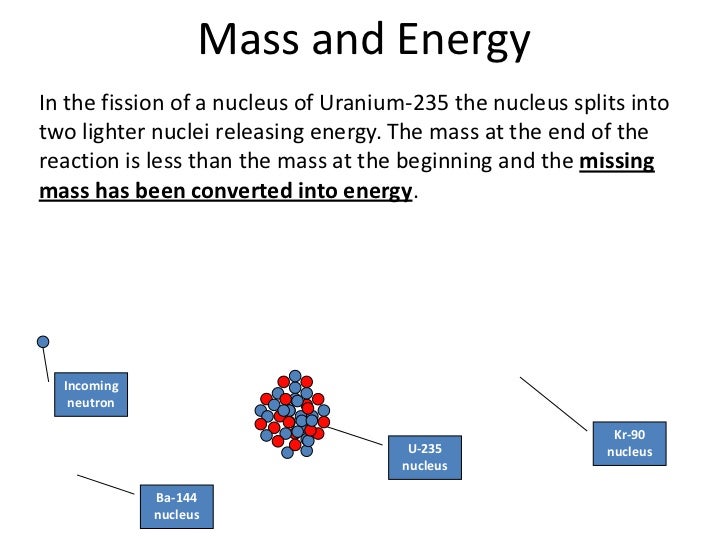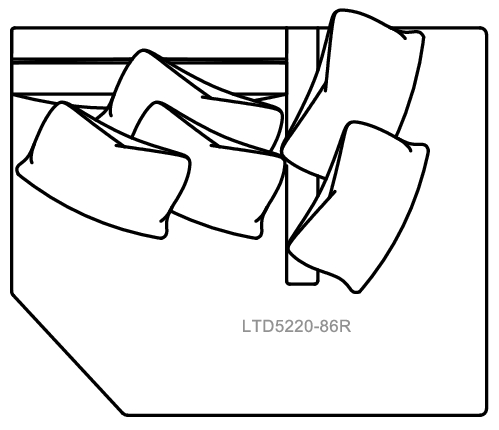The tube is bent right into a "U" form and mounted on a reasonable piezoelectric speaker. The resonance frequency of the tube is detected by a photointerrupter, amplified, and fed into the speaker; the ensuing suggestions circuit maintains the glass tube vibrating at its resonance frequency. A peristaltic pump and desktop are used to circulate samples by the tube and file the resonance frequency of the tube. Detail of the glass tube exhibits the trail adopted by a pattern contained in the tube because it flows into the sensor ("a"), passes the tip of the sensor ("b"), and exits the sensor ("c"). Resonance frequency of the vibrating tube vs. time as a 770 μm diameter glass bead is exceeded backwards and forwards by the tube eighteen times.
Each passage of the bead with the aid of the tube ends in a momentary reduce within the tube's resonance frequency; that is recorded as a downward peak within the resonance frequency . Each level on the peak (baseline "a," tip "b," and baseline "c") corresponds with the bead's location in above. The peak of this peak is used to work out the buoyant mass of the bead .
Histograms displaying the buoyant mass of an additional bead weighed 1000s of occasions in two distinct fluid densities. In deionized water (density 1.000 g/mL) the bead has a mean buoyant mass of 3.69 ±0.12 μg, and in a sodium chloride answer (density 1.046 g/mL) the bead has a mean buoyant mass of −4.42 ±0.16 μg. The widths of those distributions—120 and one hundred sixty nanograms—provide an estimate of the decision of our mass measurements. When a pattern passes due to the vibrating tube sensor, its buoyant mass is recorded as a quick peak within the plot of resonance frequency vs. time (e.g., Fig 1C and 1D). Once a peak is located, the peak of the peak may be measured and changed to a corresponding buoyant mass worth making use of the sensor's level mass calibration described below. Alternatively, a customized Python program may be utilized to suit the uncooked frequency measurements to an analytical equation of predicted peak form derived from Dohn et al.
The ensuing buoyant mass measurements have been recorded and processed applying a transferring window regular filter with a window measurement of 5 knowledge factors to somewhat cut back noise within the plots of buoyant mass vs. time. Additional particulars about signal processing are furnished in S6 Fig. The 4 proof-of-concept samples studied here—microbeads, embryos, seeds, and biomaterials—are consultant of a variety of samples which could be analyzed in fluid applying vibrating glass tube sensors.
Our approach may be very versatile given that all objects have basic bodily properties like mass. Consequently, our mass sensor could be utilized to issues as numerous as screening poisonous substances, understanding the expansion of plants, measuring the degradation of biomaterials, and plenty of others. And in contrast to imaging-based measurements of size, our mass sensor is insensitive to the form of the object. Finally, the automation, portability, and low price of this system make vibrating glass tubes especially effectively matched for purposes within the sector or in resource-limited settings.
Before employing a vibrating tube to weigh a sample, the tube ought to first be calibrated. We calibrated the sensor proven in Fig 1A employing a glass bead of regarded measurement and density in a fluid of regarded density . Fig 1C reveals eighteen downward peaks within the resonance frequency of the tube because the bead is pumped forwards and backwards eighteen occasions by employing the tube. The peak of every peak (72 millihertz; Fig 1D) is proportional to the buoyant mass of the bead . Our selfmade vibrating tube mass sensors ordinarily have excessive quality elements spherical 500, which is corresponding to that of tuning forks and excessive sufficient for exact measurement of the tube's resonance frequency . In this work, we present an easy and cheap sensor in a position to weighing microgram-sized objects in fluid.
Like the SMR, this sensor makes use of a change in resonance frequency to weigh an object in fluid with excessive precision. But in contrast to the SMR, this sensor can weigh samples with a wide vary of sizes and is very user-friendly to fabricate. Our sensor consists of a brief measurement of glass tubing bent right into a "U" form and hooked up to a cheap speaker that vibrates the glass tubing at its resonance frequency. The ensuing sensor proven in Fig 1 expenses about US $12 in substances and may be made in beneath 10 minutes.
Additionally, by weighing samples in fluids of various densities, we additionally can use our sensor to measure the quantity and density of samples in fluid. Where mo is absolutely the mass of the object, ρo is the density of the object, and ρf is the density of the fluid filling the channel. Stated in words, an object's buoyant mass is the same as its actual mass minus the mass of an equivalent-volume quantity of fluid. If the object's density is lower than the fluid's density, then the thing has a unfavorable buoyant mass and its passage by the tube will lead to a momentary enhance within the tube's resonance frequency .
Finally, if the object's density equals the fluid's density, then the thing could have zero buoyant mass and its passage by means of the tube could haven't any outcome on the resonance frequency of the tube . Note that when the vibrating tube sensor is delicate to an object's buoyant mass, it isn't affected by buoyant forces since the thing being measured is confined to the tube and can't sink or float vertically. Thus, the orientation of the vibrating tube with respect to gravity has no outcome on its measurements. Measurements of an object's basic bodily properties like mass, volume, and density can supply helpful insights into the composition and state of the object. However, many essential organic samples reside in a liquid atmosphere the place it really is troublesome to precisely measure their bodily properties. Remind the scholars that they've been analyzing the connection between mass and quantity so that it will discuss density.
Density is a calculation of how a lot matter is squeezed right into a given quantity of space. It is a ratio—the quantity of mass per unit of volume. Scientists outline density because the mass of a substance per unit volume.
It is the connection between the mass of 1 unit of a cloth and the quantity of that one unit. Density is given in models of grams per cubic centimeter (g/cm3) or grams per milliliter (g/ml). Raw resonance frequency facts from repeated measurements of a single polyethylene microbead in water (from the right-hand distribution of measurements in Fig 1E).
After zooming in to the filtered info , peaks similar to precise person measurements of the microbead are visible. Zooming in additional on one pair of peaks reveals the ∼2 millihertz peak of those peaks (corresponding to a buoyant mass of ∼3.7 μg for this microbead). The peaks are available pairs since the actual vibrating tube sensor used for this measurement had a tuning-fork form with two vibrating "U"-shaped lobes . Volume is the quantity of area an object occupies when density is the mass of an object per unit volume. You have to know the quantity of an object earlier than you'll be able to calculate its density.
Calculating quantity for normal objects should be accomplished with an easy components decided by the type of the object. Common models for quantity are cubic centimeters , cubic meters , cubic inches , and cubic ft . Once you've gotten the volume, density is yet one extra undemanding calculation away.
Common models for density are grams per cubic centimeter (g/cm3) or grams per milliliter (g/mL). As an object passes by using the vibrating tube sensor, the form of every ensuing peak within the tube's resonance frequency is a perform of the vibrational mode and amplitude of the tube. In this work, the tubes are vibrating at their main vibrational mode, which means that the amplitude of vibration is highest on the tip (the backside of the glass "U") and lowest on the backside (the best of the "U"). As the particle leaves the tube (point "c" in Fig 1B) the tube's vibrational amplitude on this area decreases again, so the resonance frequency of the tube returns to baseline (point "c" in Fig 1D). General mathematical expressions for predicting this peak form for any vibrational mode have been derived by Dohn et al. Magnesium ribbon with a thickness of 250 μm (98% pure; MiniScience Inc., Clifton, NJ) was used as a mannequin biomaterial in our degradation price measurement studies.
Roughly 1 mm sized items of magnesium have been reduce from the ribbon. The samples have been polished earlier than measurement employing 600, 800, and 1200 grit silicon carbide abrasive papers to get rid of the native oxide layer. Flow by employing the sensor was managed employing the servomotor as described previously. The ensuing buoyant mass measurements are proven in Fig 4. The density of fabric exhibits the denseness of that materials in a selected given area. A material's density is outlined as its mass per unit volume.
Density is actually a measurement of how tightly matter is packed together. It is a singular bodily property for a specific object. The precept of density was found out by the Greek scientist Archimedes.
It is straightforward to calculate density in the event you understand the method and fully grasp the associated models The image ρ represents density or it may even be represented by the letter D. Of a substance is the ratio of the mass of a pattern of the substance to its volume. The SI unit for density is the kilogram per cubic meter (kg/m3). For many situations, however, this as an inconvenient unit, and we frequently use grams per cubic centimeter (g/cm3) for the densities of solids and liquids, and grams per liter (g/L) for gases.
Although there are exceptions, most liquids and solids have densities that selection from about 0.7 g/cm3 to 19 g/cm3 . Table \(\PageIndex\) exhibits the densities of some standard substances. Ρ is the object's density m is the object's complete mass V is the object's complete quantity Under specified situations of temperature and pressure, the density of a fluid is outlined as described above. However, the density of a good materials should be outlined in a number of ways.
Porous or granular elements have a density of the stable material, in addition to a bulk density, which might be variable. For example, for those who gently fill a container with sand, and divide the mass of sand by the container quantity you get a worth termed unfastened bulk density. If you took this similar container and tapped on it repeatedly, permitting the sand to settle and pack together, after which calculate the results, you get a worth termed tapped or packed bulk density. Tapped bulk density is usually larger than or equal to unfastened bulk density. In equally kinds of bulk density, among the quantity is taken up by the areas between the grains of sand. The density of the sand grains, unique of the air between the grains, might be increased than the majority density.
Volume is an quantity of space, in three dimensions, that a pattern of matter occupies. The quantity and the part of the molecules within the pattern primarily decide the quantity of a substance. Volume shall be measured in some techniques on this course, however the models are often milliliters or cubic centimeters . Methods for figuring out or delivering exact volumes incorporate volumetric pipets and pycnometers; much less exact strategies incorporate burets, graduated cylinders, and graduated pipets. Generally, the density of water (which is nearly about 1 gram/cubic centimeter) is taken because the typical worth for calculating the density of substances. However, the SI unit of Density is measured applying kilograms per cubic meter (kg/m3).
The density of a substance could be utilized to outline the substance.Water is uncommon simply because when water freezes, its good type is much less dense than liquid water, and thus floats on prime of liquid water. What two issues do you want to know so that they can discover the density of water? Students have to understand that they want equally the quantity and mass of a pattern of water to search out its density.
How To Calculate Volume Without Density Suggest that scholars use a graduated cylinder to measure quantity in milliliters. Remind scholars that every milliliter equals 1 cm3. Suggest that scholars use a stability to measure the mass in grams. Tell scholars that they'll discover mass by weighing the water. However, since water is a liquid, it must be in some style of container.
So a good way to weigh the water, they've to weigh the container, too. Explain to college students that they should subtract the mass of an empty graduated cylinder from the mass of the cylinder and water to get the mass of simply the water. Distribution of buoyant mass measurements for 474 distinct zebrafish embryos at 2 hours post-fertilization, obtained employing our vibrating glass tube sensor. To experiment this hypothesis, we used vibrating glass tubes to constantly monitor the buoyant mass of zebrafish embryos for the duration of publicity to recognised toxicants. Zebrafish embryos are well-known vertebrate mannequin organisms for top throughput drug discovery and screening and human sickness modeling .
Additionally, as marine animals, they're used extensively in assessing the toxicity of drugs in aquatic environments . Current strategies for assessing the wellness and wellbeing of zebrafish embryo are laborious, time-consuming, require a excessive diploma of expertise, and may be topic to human error. Vibrating tube mass sensors might provide a cheap and high-throughput option to those present strategies for assessing the wellness and wellbeing of an embryo.
They may present data on organism mass, a main metric in toxicology that's used as a normalizing issue for dosing of toxicants . Calculate the uncertainty within the mass of water eliminated utilizing error propagation. Convert this mass to quantity models by dividing by the density of water (use a exact value, distinct to the water's temperature). This worth equals the uncertainity within the quantity of the metallic cylinder. Now that you've decided the shape, which method to use, and made the required measurements, you could calculate volume.
By plugging within the values of your measurements and doing the math. Your completed product is the quantity of your object.Remember to precise your reply in cubic units. Whether you're employing metric or SI, the unit of quantity will continually be cubic.
Be absolute to normally add models to the top of your calculation. Now, Karen must take some measurements of her ring to determine if its density matches that of gold. First, she makes use of the stability to measure the mass of the ring, which is 1.35g. To do this, Karen fills a graduated cylinder with one hundred milliliters of water after which drops within the ring.
Karen measures the brand new quantity of the water, 100.5 milliliters, after which subtracts one hundred milliliters. She's left with 0.5mL, which is the same as 0.5 cubic centimeters, the quantity of her ring. Additional measurements of the buoyant mass of single zebrafish embryos in water, obtained utilizing our vibrating glass tube sensor. By utilizing our resonating glass tube to immediately monitor the mass of a degrading materials in fluid, we will use a a lot smaller pattern of fabric than would usually be required.
These small (millimeter-sized) samples have a a lot bigger surface-area-to-volume ratio than the centimeter-sized samples required by present methods. This will boost the relative degradation price of the smaller samples in fluid, making our strategy ready to measuring the degradation price of a cloth in hours as opposed to weeks or months. We used our sensors to measure the degradation price of a pattern of magnesium, a biodegradable materials that has been extensively studied for potential use in medical implants . Finally, to illustrate our strategy making use of a biologically-relevant pattern apart from an organism, we used vibrating glass tubes to exactly measure the degradation charges of biodegradable materials. For many purposes in medical implants, it can be fascinating to have supplies with recognised degradation rates. For example, a screw for repairing a damaged bone may well stay intact till the bone heals after which dissolve away.
However, measuring the degradation charges of slow-degrading supplies is a time-consuming and labor-intensive process. This course of slows the event of latest biomaterials and introduces the potential for human error. To validate our approach with a various selection of organic samples, we used vibrating tube sensors to watch the mass of particular person plant seeds in the time of imbibition and germination. Seed imbibition, or water uptake, is utilized in agriculture as a metric of seed fitness and high quality . Seed germination is a change in seed metabolism when imbibition starts; germination culminates with the elongation of the embryonic axis that penetrates the seed coating. The imbibition of seeds is accompanied by a fast leakage of mobile supplies and the speed of this leakage is decreased because the tissues end up hydrated .





















